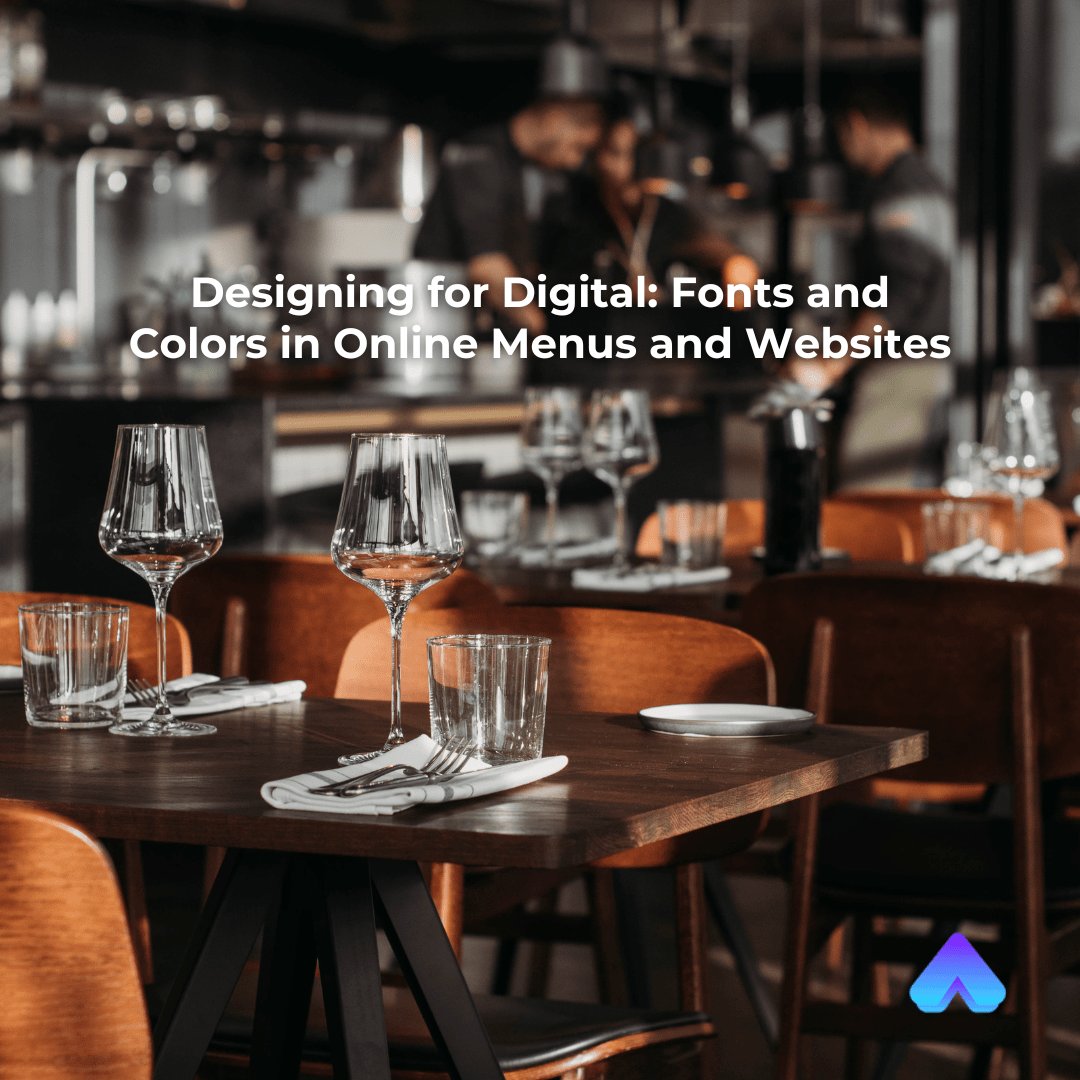In today's digital age, the way your restaurant presents itself online is just as important as the physical dining experience you offer. A well-designed digital presence can attract new customers, retain existing ones, and enhance the overall dining experience. One of the key elements in achieving this is through the careful selection of fonts and colors for your online menus and website. In this blog, we'll delve into the best practices for choosing fonts and colors that ensure a great user experience and reinforce your brand identity.
The Importance of Typography in Digital Design
Typography is more than just choosing a font; it's about creating a visual hierarchy, ensuring readability, and conveying the right mood. Here are some best practices for selecting fonts for your online menu and website:
1. Prioritize Readability
- Ensure that the fonts you choose are easy to read on various devices. Consider the size, weight, and spacing of the fonts. For body text, sans-serif fonts like Arial, Helvetica, or Verdana are often preferred due to their clarity on screens. For headings, you can use more decorative fonts, but they should still be easily readable.
2. Create a Visual Hierarchy
- Use different font sizes and weights to create a clear visual hierarchy. Headings should be bold and larger to draw attention, while the body text should be smaller and lighter. This helps guide the reader's eye through the content in a logical flow.
3. Limit Font Variations
- Stick to a maximum of two or three fonts. Too many fonts can make your website look cluttered and unprofessional. Typically, one font for headings and another for body text is sufficient.
4. Consider Brand Alignment
- Your font choices should align with your brand's personality. A fine-dining restaurant might opt for elegant serif fonts, while a casual café might choose more playful and modern fonts.
5. Test Across Devices
- Ensure your chosen fonts look good on all devices, including desktops, tablets, and smartphones. Responsive design is crucial for maintaining readability across different screen sizes.
The Role of Color in Digital Design
Colors play a significant role in setting the tone and enhancing the user experience of your digital presence. Here are some tips for selecting the right colors for your online menu and website:
1. Reflect Your Brand Identity
- Your color scheme should reflect your restaurant's brand identity. For instance, a Mediterranean restaurant might use blues and whites to evoke a coastal feel, while a steakhouse might use rich browns and reds to create a warm, inviting atmosphere.
2. Understand Color Psychology
- Different colors evoke different emotions. For example, red can stimulate appetite, making it a popular choice for food-related websites. Green often represents freshness and health, making it suitable for vegetarian or organic restaurants.
3. Ensure Accessibility
- Make sure your color choices are accessible to all users, including those with color blindness. Use tools like the Web Content Accessibility Guidelines (WCAG) to check color contrast and ensure text is legible against background colors.
4. Use Color to Guide Attention
- Utilize color to highlight important elements such as call-to-action buttons, special offers, or featured menu items. Bright and contrasting colors can draw attention to these key areas.
5. Maintain Consistency
- Consistency in color usage helps create a cohesive and professional look. Stick to your brand's color palette and avoid using too many different colors, which can be distracting and confusing.
Best Practices for Online Menus
An online menu is often the first point of contact potential customers have with your restaurant. Here are some best practices to ensure it makes a great impression:
1. Simplify Navigation
- Make your menu easy to navigate. Use clear headings and categories, and ensure that users can quickly find what they're looking for. Consider using a sticky menu or dropdown options for larger menus.
2. Highlight Specials and Popular Items
- Use fonts and colors to highlight daily specials, seasonal items, or customer favorites. This not only draws attention to these items but also helps guide customers' choices.
3. Use High-Quality Images
- Pair your menu items with high-quality images to give customers a visual representation of the dishes. Ensure that the images are optimized for fast loading times to avoid slowing down your website.
4. Provide Detailed Descriptions
- Include detailed descriptions of each menu item, highlighting key ingredients, flavors, and preparation methods. Use a readable font and appropriate color contrast to ensure these descriptions are easy to read.
Best Practices for Restaurant Websites
Your website is the digital front door of your restaurant. Here are some tips to create a user-friendly and visually appealing restaurant website:
1. Embrace Minimalism
- A clean and uncluttered design makes it easier for users to navigate your site. Use white space effectively and avoid overcrowding your pages with too much text or too many images.
2. Optimize for Mobile
- Ensure your website is fully responsive and looks great on all devices. Mobile optimization is crucial as many users will access your site from their smartphones.
3. Incorporate Clear Call-to-Actions
- Use clear and compelling call-to-action buttons, such as "Make a Reservation," "Order Online," or "View Menu." Use contrasting colors to make these buttons stand out.
4. Keep Content Fresh
- Regularly update your website with fresh content, such as new menu items, upcoming events, or special promotions. This keeps customers engaged and encourages repeat visits.
5. Enhance Load Times
- Fast load times are essential for a good user experience. Optimize images, use a reliable hosting service, and implement best practices for web performance to ensure your site loads quickly.
Enhancing the User Experience with Integrated Design
Combining the right fonts and colors is just one part of creating an effective digital presence. Integrated design ensures that every element of your website works together to provide a seamless user experience. Here are additional tips:
1. Consistent Branding Across Platforms
- Ensure that your branding is consistent across all digital platforms, including social media, online ordering systems, and third-party review sites. This consistency helps build trust and recognition among your customers.
2. Interactive Elements
- Incorporate interactive elements such as hover effects, animations, and dynamic content to engage users. These elements should be used sparingly and purposefully to enhance the user experience without overwhelming the visitor.
3. User-Friendly Interface
- Design your website with the user in mind. Simple navigation, clear calls-to-action, and intuitive design elements help create a positive experience that encourages users to return.
4. Feedback and Testing
- Regularly gather feedback from users and test different design elements to see what works best. A/B testing can help determine the most effective fonts, colors, and layouts for your website.
In conclusion, a well-designed digital presence is essential for restaurants in today's competitive market. By thoughtfully selecting fonts and colors, you can create an online experience that is not only visually appealing but also functional and reflective of your brand identity. Prioritizing readability, consistency, and user-friendly design ensures that your online menus and websites are engaging and accessible to all users.
Implementing these best practices will help you attract and retain customers, guiding them seamlessly from their initial visit to your website to their dining experience. Remember, your digital presence is often the first impression potential customers will have of your restaurant, so make it count.
Ready to elevate your restaurant's digital presence? Contact us today to create an engaging and effective online experience for your customers!



